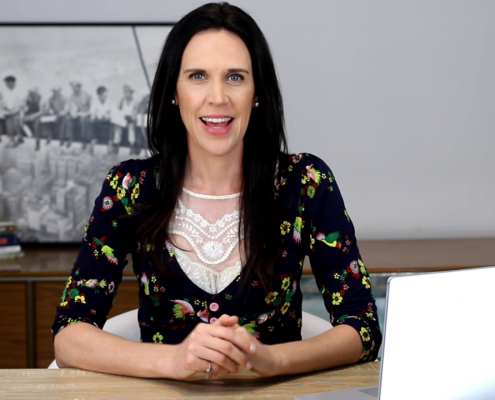In 2015, Safe Work Australia found that there was ‘increasing attention given to incentive schemes that focus on financial performance, or more specifically cost reduction, with no countermanding incentive to ensure health and safety risks were managed effectively’.
This is supported by safety researchers Hopkins & Maslen in their book Risky Rewards: How Company Bonuses Affect Safety, who also found that overall ‘executive incentive structures motivate a short-term orientation to organisational performance and potentially pose a strong disincentive to spending on health and safety’ (Hopkins & Maslen, 2015).
Additionally, a 2018 report by PwC on executive remuneration trends found that ‘financially skewed scorecards remain common, with non-financial measures typically making up between 30-50% of STIs’. These were fairly similar in PwC’s 2019 report. In their 2018 report, PwC also found that ‘there is a perception that the possible consequences – particularly of poor risk behaviour – may not be sufficiently captured in a scorecard.’
These findings are all consistent with prior research that suggests ‘those in the organisation are often forced to choose between health and safety and profit/production where there’s a conflict, and that people’s actions are shaped by managers’ beliefs as to what is required to ensure the organisation’s future success’.
So arguably it’s pretty important to understand what then shapes your management team’s beliefs of what is required to ensure that the organisation succeeds.
I think you’d agree that their perception is certainly shaped, amongst other things, by how they’re incentivized.
Short-term incentives
The issue of bonuses such as short-term incentives and the influence they have on organisational culture was a key focus of the Senate Inquiry into the Wells Fargo banking scandal and the Australian Royal Commission into misconduct in the Banking, Superannuation and Financial Services Industry.
So how do we design executive short term incentives that prioritize safety and health, where there’s a conflict with production/profit?
CEO incentives, both short and long term, typically far exceed their fixed pay, and most short-term incentive criteria include only a small percentage relating to safety performance.
In the same PwC report that I mentioned earlier on executive remuneration trends, 80% of Australian companies were found to defer their STI payments for 2 – 3 years. The STI is generally measured against a balanced scorecard of financial and non-financial measures of which over the years have increasingly incorporated safety.
Indeed, in the same PwC report, ‘health, safety and environment’ was found in the STI metrics for over 40% of ASX100 companies. And in a separate 2017 report by Pearl Meyer they found that 11% of 1,400 public companies indicated direct links between executive compensation and ESG issues, with the most common factors being health and safety policies.
So in theory, STIs have a significant potential to enhance your organisation’s health and safety performance, with respect to both personal and process safety, but it all comes down to the design of the bonus and the behaviour it drives.
Designing Short Term Incentives
So here are three factors for you to consider when designing or endorsing STIs to ensure that health and safety is prioritised over profit/production, when there’s a conflict.
1. Unbalanced weighting
Firstly, where the weighting for health and safety is marginal compared to the weighting given to the rest of the scorecard, it can only be a relatively minor contributor to the group performance scorecard and hence to the group component of the bonus. But as i mentioned earlier, PwC found that scorecards continue to be financially skewed, with non-financial measures making up only 30 – 50%, compared to the weightings given to the rest of the scorecard.
So even if we wanted to take 50% of the 30-50% available and give it all to health and safety factors, that really isn’t likely to happen given growing demand from company directors, investors, financial analysts, and other stakeholders for comparative data in the sustainability field.
This means, if there are more non-financial risks to monitor, the percentage given to health and safety is going to be a relatively minor contributor to the group performance component of the STI. Therefore, where there’s a conflict between production/profit and health and safety, it’s likely that health and safety will take a backseat because we will rationally seek to maximise a reward by pursuing the target that offers the greatest incentive.
And that’s not because we’re greedy, it’s because compensation plays a key role in communicating priorities and influencing culture.
2. Subjective application
A second factor to consider in the design of STIs is that if the ultimate evaluation is qualitative, the review process will be quite subjective which creates a real risk that personal biases will play more of a role than they should in reviewing performance. Additionally, the subjective process risks a lack of transparency around how much weight has been given to health and safety even if there’s a percentage allocated to the health and safety component of the bonus.
This lack of transparency was mentioned in the 2016 Citi Research Safety Spotlight report where they found 28 of a suite 32 ‘higher risk’ companies on the ASX100 included safety criteria in CEO incentive schemes; however, often the criteria, and performance assessment was not clearly disclosed.
The lack of transparency is a growing trend that was also identified in the PwC report where a number of companies are applying judgement to incentive outcomes or taking into account factors that are not explicitly incorporated in the incentive scorecard.
The Australian Council of Superannuation Investors also found in their 2019 report on the Future of Health and Safety Reporting that “company remuneration reports often fail to explain in adequate detail the link between safety performance and executive pay”.
The argument for subjective review is that the board can apply judgement around non-financial issues; such as, risk, reputation, culture, safety and sustainability, but it’s increasingly frustrating for investors who make decisions based on the transparency of a company’s disclosure.
In one example, Hopkins & Maslen found that a company’s safety performance was assessed to have performed ‘marginally above target’ despite experiencing two workplace fatalities and an injury rate that was ‘well above target’.
3. Perceptible influence
The third factor to consider in the design of STIs is that people need to be able to influence the results in a perceptible way; that is, whatever a person is going to be measured against, they need perceive that they can influence that target in a way that actually makes a difference to the result.
For example, a member of the executive could easily be frustrated that their bonus is impacted by their colleagues’ behaviour when their colleague doesn’t demonstrate the same priority for safe and healthy work as they do.
Now because they can’t direct the behaviour of their colleague to put more focus on health and safety, that’s a job for the CEO, there’s a real risk of learned helplessness for that member of the executive. You know when you hear someone say, ‘why bother, it doesn’t matter anyway’, this is someone who has repeatedly faced an uncontrollable, possibly stressful situation, and they’ve gotten to a point where they’ve simply given up, and even if they were given back some level of control, they probably wouldn’t exercise it – this is what behavioural psychologists refer to as learned helplessness.
So if a member of your executive is feeling helpless, it would be understandable that they start to do less in their area of responsibility to prioritise safe and healthy work, because they think why bother. They might think, “if I personally try hard to over achieve our group target, yet it’s brought down by others on the team, then why would I really bother trying, my efforts are better focussed where I can actually make an impact”.
Not to mention that if a member of your executive team prioritises safety and health outcomes above profit/production, but others don’t, then the performance of that executive member is going to look worse in the short-term than their peers and that will likely affect their performance, if not their bonus.
Group Targets for the Executive
This means if there is a GROUP executive target, where we all win when it’s good, but we all lose when it’s bad, we really need to design executive-specific KPIs that ensure each member is clear on how they contribute to the group result and then measure them against that.
This is perhaps most important with health and safety targets because safe and healthy outcomes are inextricably linked to broader business decisions. For example, your CFO is making financial and budgetary decisions that impact safe and healthy work in other departments, but there is a knowledge gap for accountants in terms of their impact on safe and healthy work. This knowledge gap contributes to them often taking the word of management that there will be little impact on safe and healthy work when budget cuts are discussed, with little to no formal assurance.
So in terms of health and safety KPIs for your CFO, consider inclusion of health and safety in business planning, including financial and budgetary decisions and perhaps that your CFO ensures that they seek assurance as to whether safe and healthy work is resourced adequately post-budget decisions or restructures. To do this, a CFO might want to ensure that various life cycle costs are considered as part of budgeting, or ensure that health and safety risks are incorporated into design and purchasing stages, or that cost-cutting and budgetary decisions have maintenance as a top priority because inadequate maintenance is linked to numerous industrial disasters, and a contributing factor in hundreds of workplace fatalities and serious injuries every year.
Overall, boards that are thinking about these issues now and taking steps to advance their progress are clearly ahead of the curve.
As always, I hope this has helped you in your quest to know What to Ask and When to Act.
Be brave and stay true to your commitment to lead from your heart and I’m confident you will reap the rewards.
All my best,
Sam
Welcome!
I’m Samantha
I help board members succeed in the boardroom and make a positive impact on the health, happiness and resilience of society through their effective leadership and governance of safety, health and well-being.
YOU MAY ALSO LIKE…
FEATURED CONTENT
[text-blocks id=”4249″ plain=”1″]








Let us know what you have to say:
Want to join the discussion?Your email address will not be published.